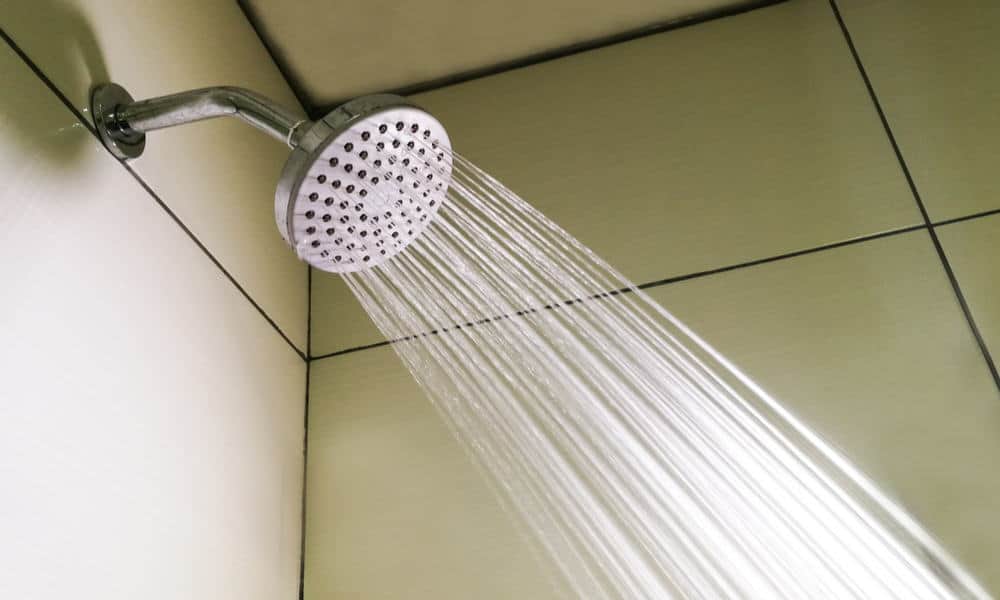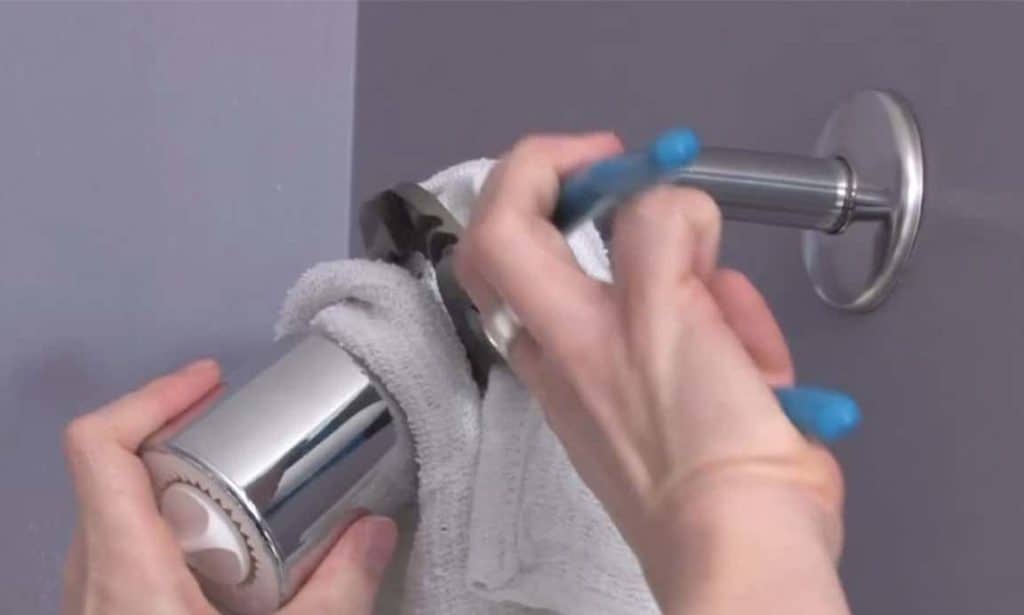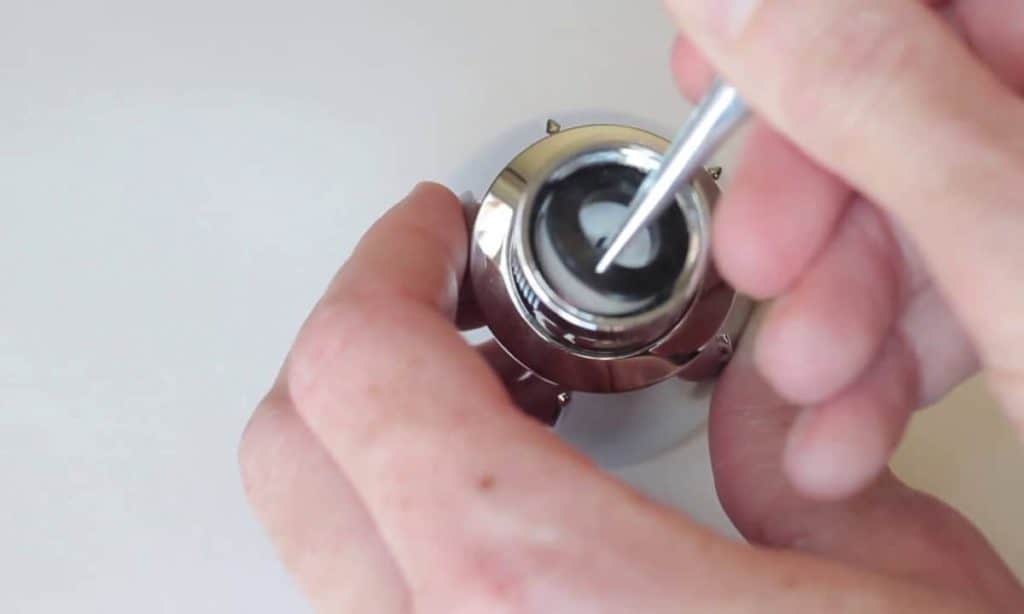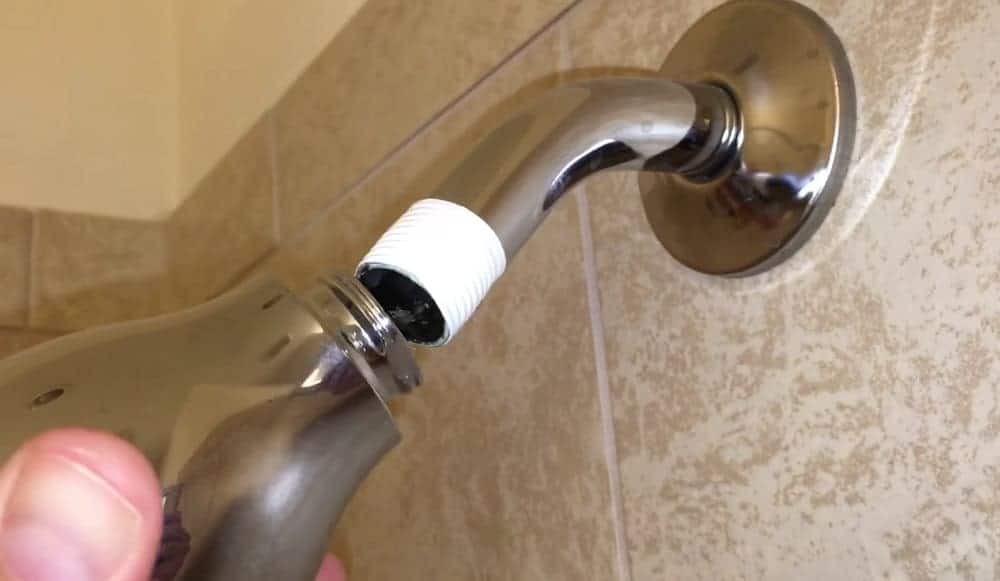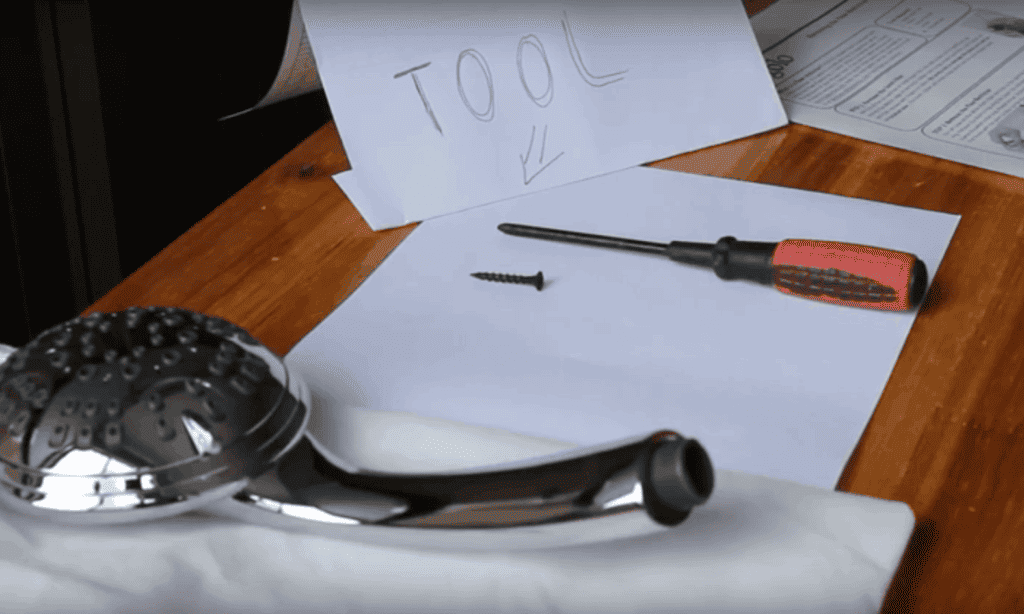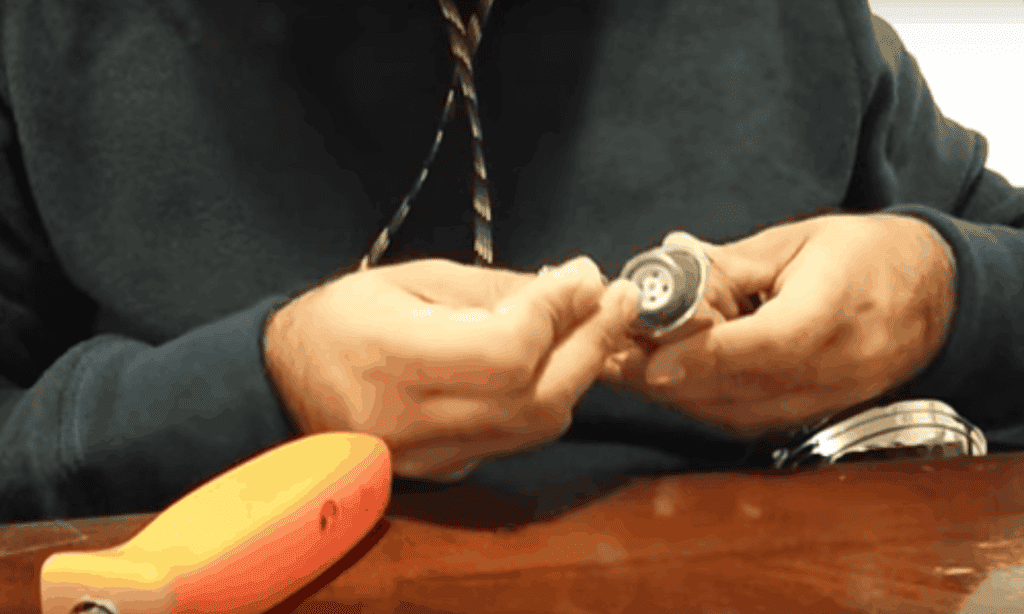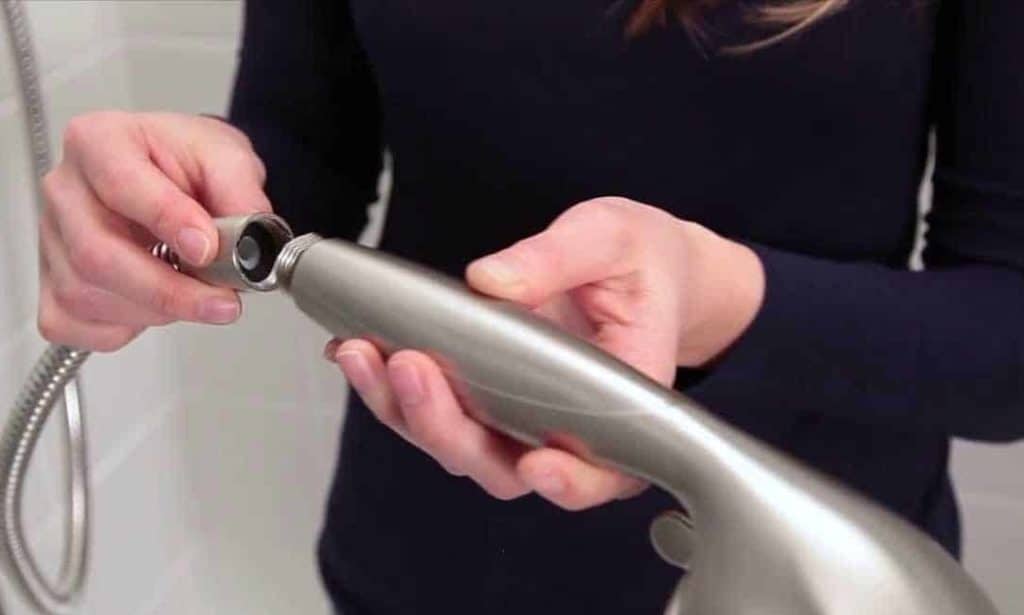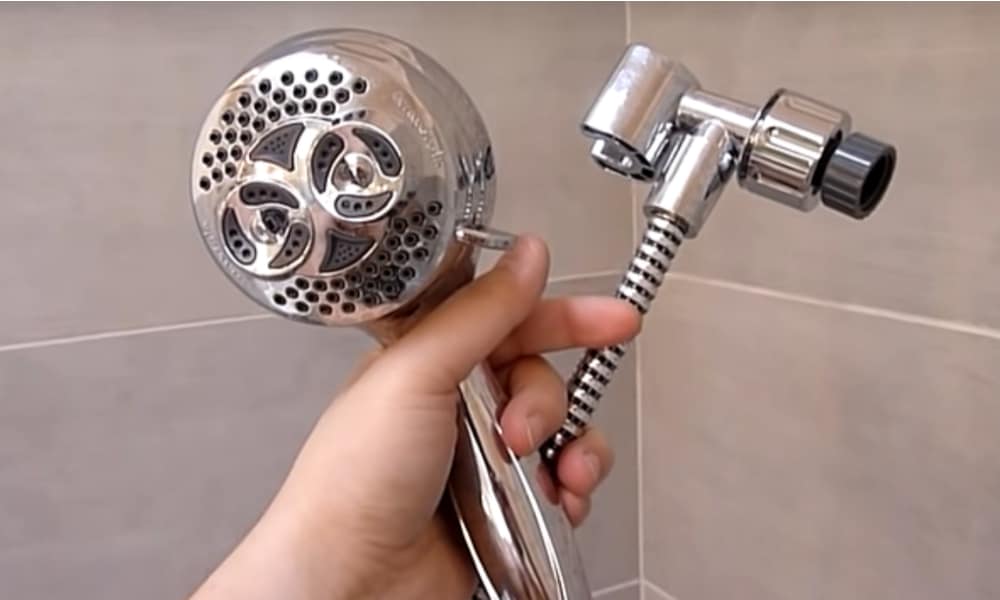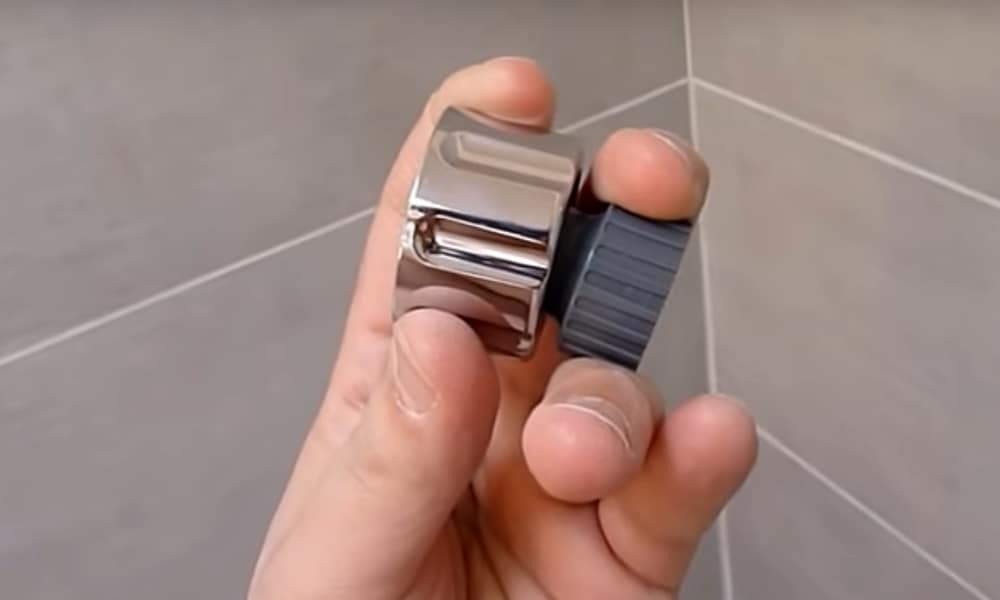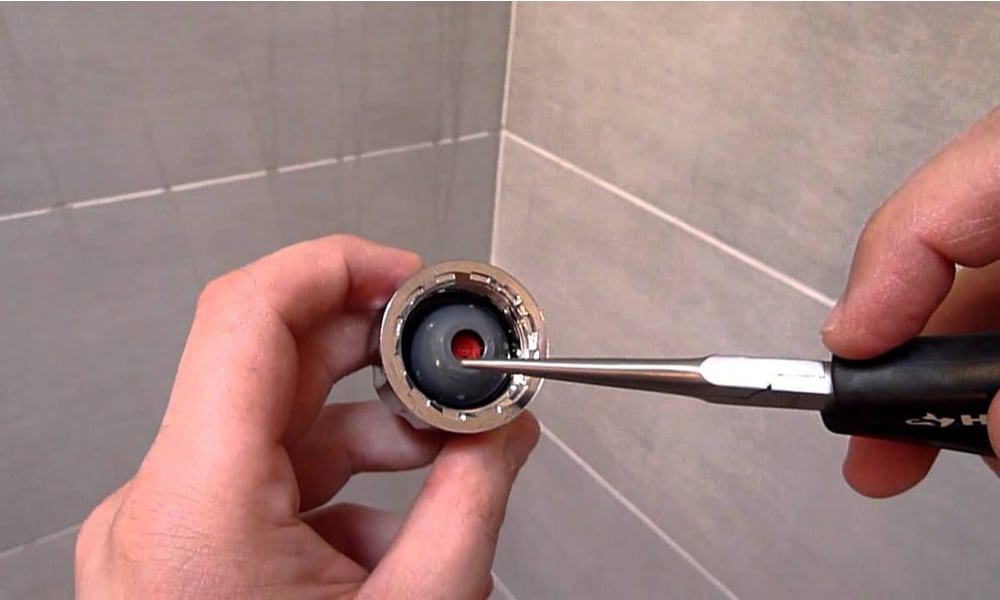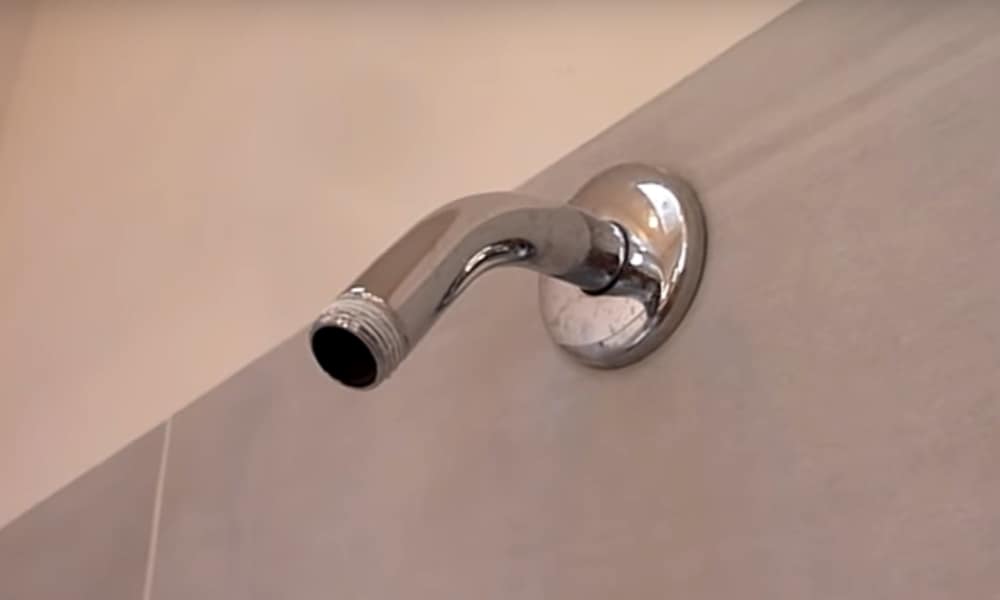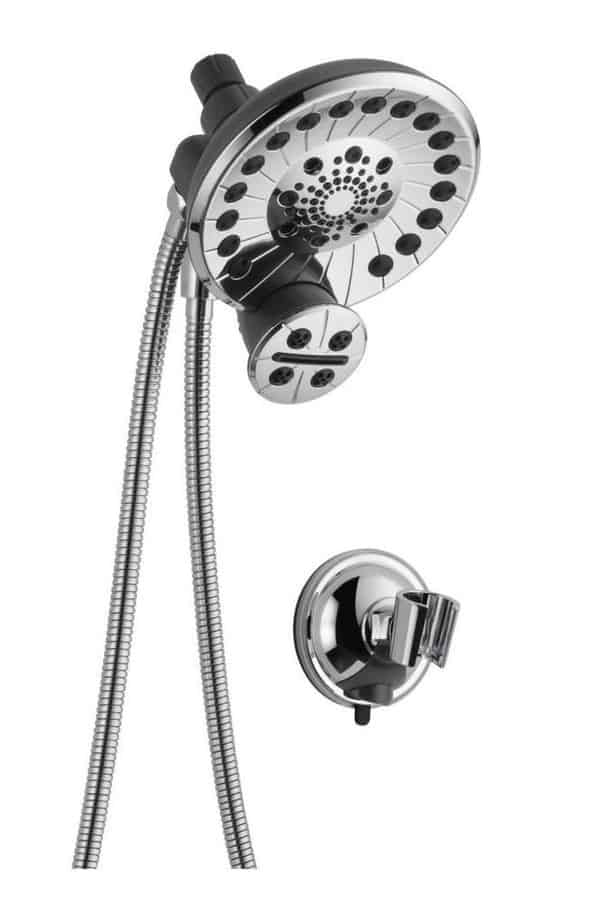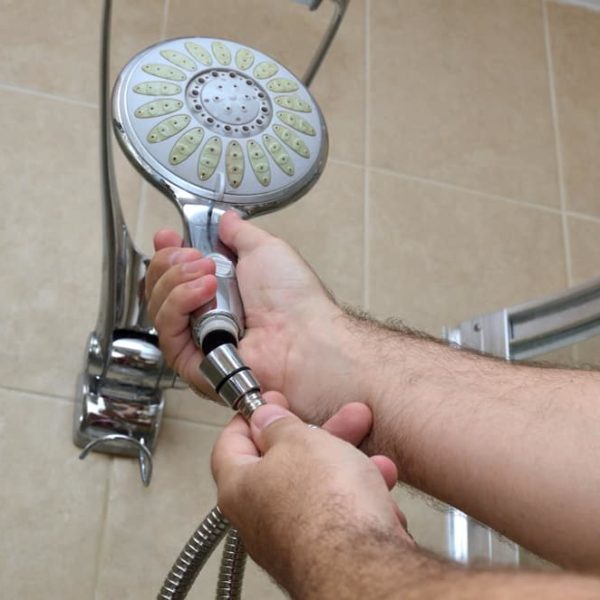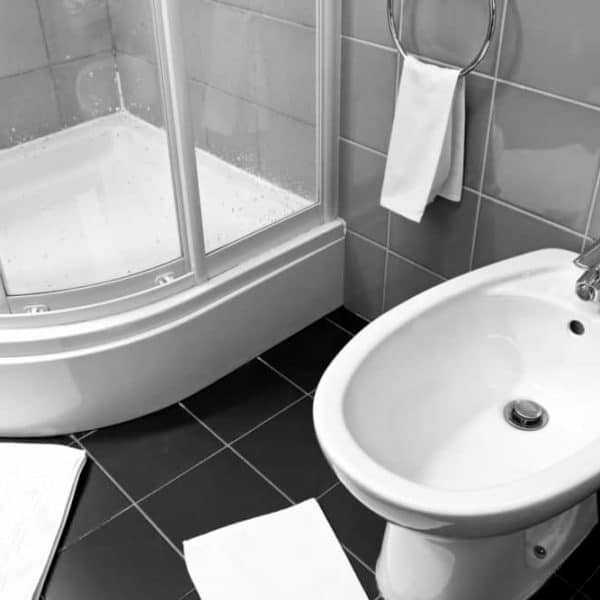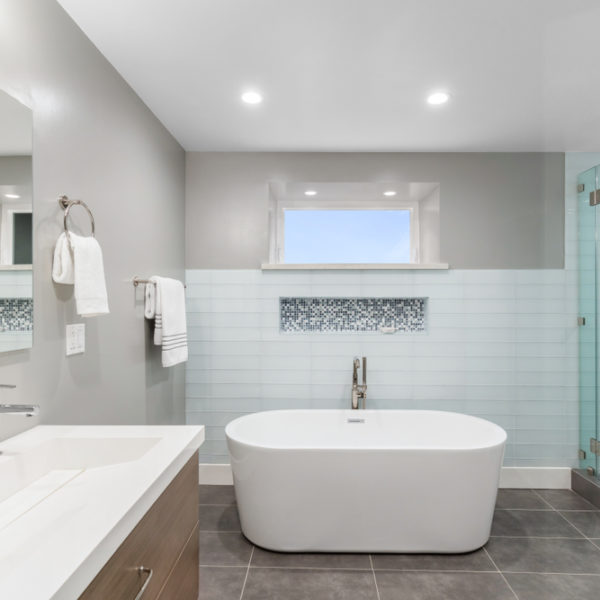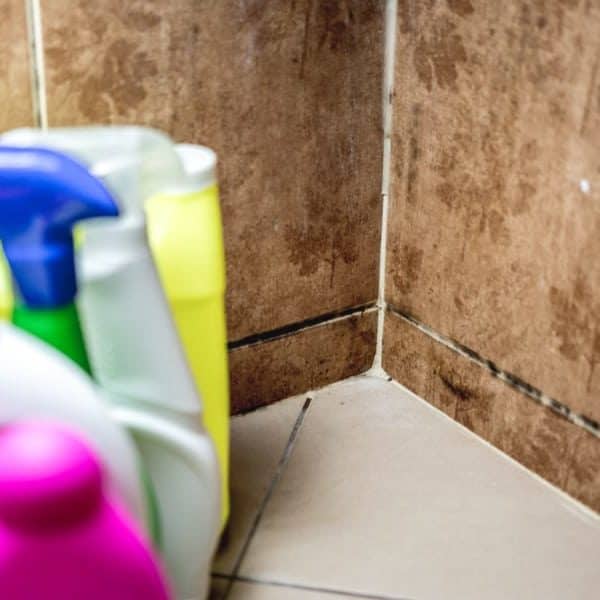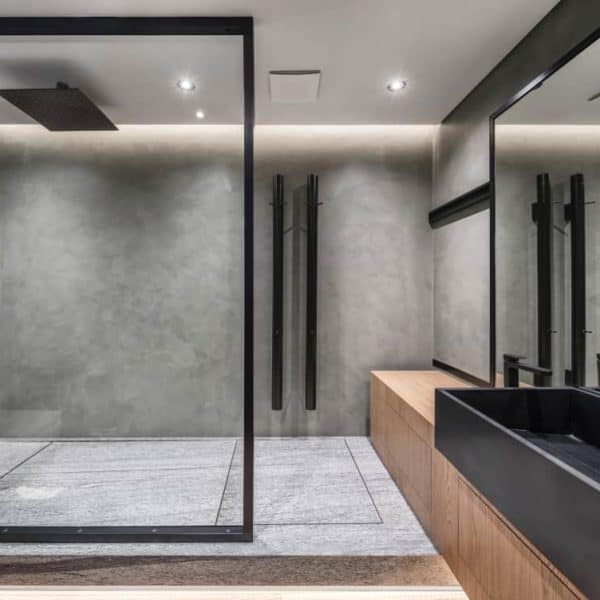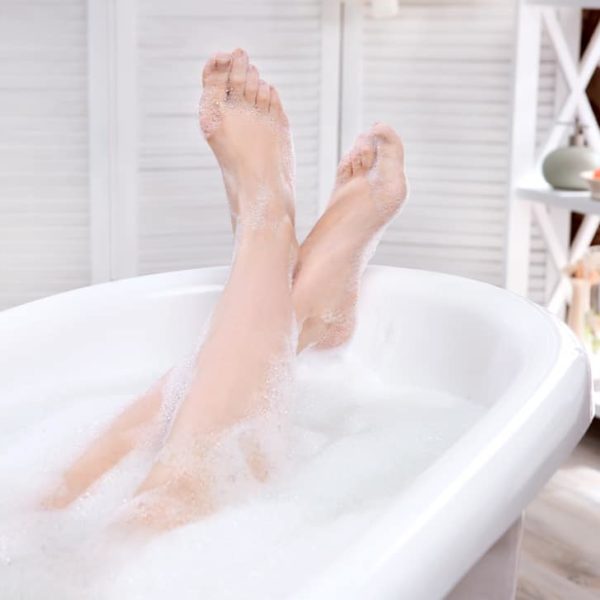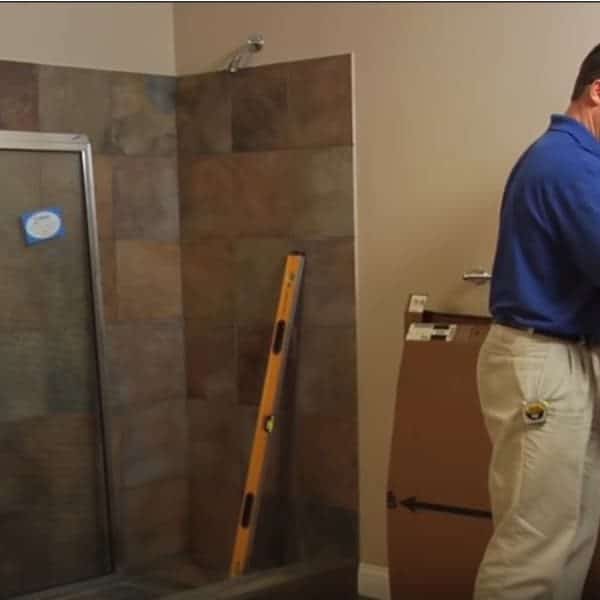If you have a flow restrictor in your showerhead, then you are using less water for your bathtimes. According to experts, these devices reduce the water flow from your showerhead to 2.5 gallons per minute.
Although this is a great idea, the restrictor can become a shower time nightmare, particularly in areas with low water pressure. Here, these items turn an ideal shower spray to an annoying trickle of water, making it difficult to rinse your body.
You can take out the flow restrictor to solve this problem, but you might have to pay more for your utility bills. Are you willing to spend the extra cash? Here are easy steps to remove flow restrictor from shower head fittings.
Before you get started, ensure you have the required tools in place. These include:
- Adjustable/pipe wrench
- rag
- some paper clips
- needle nose pliers
- Teflon tape
Let’s use these tools in the following guide.
How to Remove a Flow Restrictor from an Embedded Shower Head
Many homes have this type of shower head. With these steps, you can handle extract the restrictor with ease.
Step 1: Remove the Head
Locate the bent pipe or shower arm and connector nut that sticks out of your bathroom wall. Wrap both parts with a clean rag to protect them from scratches.
Hold the arm firmly with a pipe wrench and loosen the connector nut with an adjustable wrench. Loosen until the head is removed from the shower arm.
Step 2: Extract the Restrictor
Look for the washer inside the connector nut. Here this item offers a tight seal and secures a mesh filter or screen. Normally, both items have to be extracted before you can see the restrictor.
Gently take out the washer with needle-nose pliers. Remove the screen by tapping the bottom of the head with your palms. If the screen is stuck, use the pliers to remove the item.
Pull out the flow restrictor with a flat-head screwdriver. If you don’t know what a restrictor looks like, it’s a plastic disk with any of the following colors such as white, green, pink, and red.
Step 3: Set Up the Showerhead
Return the screen to its original position. Fix the washer and push it with your fingers to prevent it from falling off. Take out the existing Teflon tape from the linear grooves on the shower arm. Wrap fresh tape around the threads in a clockwise direction.
Secure the connector nut by tightening it with your hands. When the nut is firmly placed, wrap a rag around the nut and arm, then grab the arm with the pipe wrench. Use the adjustable wrench to turn the nut.
How to Remove a Flow Restrictor from a Handheld Shower Head
Handheld shower heads are quite popular with homeowners. The tips below will help you take out their water restrictor within minutes.
Step 1: Check for the Flow Restrictor
Look for the water restrictor on the handheld showerhead by using the owner’s manual or manufacturer’s website.
Usually, the water restrictor is found inside the holder attached to the shower arm, or the end of the handle that connects to the flexible tubing. However, the position of the restrictor depends on its brand.
Step 2: Extract the Restrictor
If you have a product with its showerhead at the bottom of the handle, protect the connector nut with a clean rag. Firmly hold the covered nut with adjustable pliers and rotate counterclockwise to take out the handle from the tubing.
Pry the washer out of the handle and filter screen with needle-nose pliers. Pull out the exposed restrictor with a flat head screwdriver.
If you have a product with a restrictor inside the holder, protect the connector and shower arm with a clean rag. Firmly hold the arm with a pipe wrench while you use the adjustable pliers to hold the nut. Rotate the nut with clockwise movements until the holders drop from the shower arm.
Move to the end of the holder, then pull out the washer, and filter screen with needle-nose pliers. Remove the restrictor with a flat head screwdriver.
Step 3: Set Up the Shower Head
Return the filter screen and washer to their original position on the fixture. Ensure you push in the washer with your fingers. Take out any previous tape which form the linear grooves on the flexible tubing or shower arm.
Cover the threads in fresh tape. Tighten the connector with your hands and wrap the nut with a rag. Secure the nut another quarter turn with an adjustable wrench.
How to Remove a Flow Restrictor from a Moen Shower Head
Do you use a Moen showerhead? Here are is an easy way to take out the restrictor in this fixture and enjoy a strong shower spray.
Step 1: Take Out the Shower Head
Wrap the showerhead with a clean rag and tighten the jaws with an adjustable wrench. Hold the shower pipe (the part closest to the bathroom wall) with one hand and rotate the showerhead connector with an adjustable wrench.
Step 2: Disassemble the Fitting
Extract the rubber O ring gasket with your hands to prevent potential damage to the fragile item. Lay your palm on the showerhead and shake gently to remove the screen
Step 3: Find the Flow Restrictor
Move to the neck of the showerhead and find the flow restrictor. This piece is made from plastic and can be found with a screwdriver.
Step 4: Take Out the Flow Restrictor
Gently extract the water restrictor from the neck of the fixture. Ensure you apply minimal pressure when handling the inner thread of the showerhead to prevent damage.
Step 5: Reassemble the Parts
Return the screen to the showerhead and fix the O ring on it. Remember to keep this assembly tight and secure.
Tightly wrap the new plumber tape around the showerhead. Then, firmly fix the Moen Shower Head to the shower arm with your hands. Finally, wrap the rag around the shower arm and tighten with the connections with the adjustable wrench.
Before using our steps to remove flow restrictor from shower head, drain or close the bathroom fixtures that supply water.
How to Remove the Flow Restrictor in a Waterpik Showerhead
Like most showerheads on this guide, this fixture uses a flow restrictor to prevent wastage. As a result, you will pay fewer bills to your utility provider.
However, the restrictor can disturb the shower spray, turning it to an annoying weak trickle. To enjoy a strong flow, especially when you turn the shower valve, you should remove the water restrictor with the following steps.
Step 1: Remove the Shower Head
Extract the Waterpik shower head from the pipe that extends from the wall (showerhead). To do this, use a crescent wrench but ensure the showerhead is wrapped with a rag to avoid scratches.
Step 2: Extract the Washer
Find and remove the black rubber washer on the shower. You can find it between the showerhead and shower arm.
Step 3: Extract the Flow Restrictor
Take out the restrictor from the showerhead. Place a Phillips screwdriver into the star-shaped hole in the spray nozzle. Rotate the small white, green, or pink restrictor behind the hole until it’s loose.
Step 4: Protect the Shower Arm
Cover the threads on the arm with plumbers tape. Using this adhesive, you will protect the threads from rust when you attach the shower head to it.
Step 5: Reassemble and Reinstall the Bathroom Fitting
Return the screens and rubber gasket to their positions on the shower arm. Attach and tighten the showerhead on the shower arm with a crescent wrench. Remember to cover the showerhead with a rag.
How to Remove a Flow Restrictor from a Delta Showerhead
Another type of showerhead that uses a flow restrictor is the Delta model. As expected, this feature conserves water (at 2.6 gallons per minute) and cuts your utility bills.
Although federal law ensures that companies sell showerheads that have these items, restrictors will reduce the water pressure in your shower.
If you want a shower with a strong spray, you will need to remove the regulator from the bathroom fitting. Here is a quick guide to take out the accessory with the tools mentioned above.
Step 1: Protect the Connector
Wrap a clean rag around the chrome connector at the spot where the showerhead extends from the wall. The fabric keeps the fixture from damage.
Step 2: Unscrew the Showerhead
Tighten an adjustable wrench over the wrapped cloth. Loosen the showerhead with the wrench and take out the fixture from the pipe
Step 3: Extract the Washer
Carefully remove the washer from the fixture’s threaded coupler. Ensure you use a pair of needle-nose pliers.
Step 4: Remove the Flow Restrictor
Firmly hold the opaque nylon flow restrictor under the washer with the needle-nose pliers and pull it out of the fixture.
Step 5: Reassemble and Reinstall the Delta Showerhead
Return the washer to its previous position on the Delta coupler. Press the item with your thumb to keep it secure. Replace the Delta connector on the pipe and tighten it down with the adjustable wrench to secure the connection.
How to Increase the Spray of a Peerless Showerhead
If you have a Peerless showerhead that supplies a trickle of water, cleaning the connection, and taking out the water restrictor are easy ways to enhance the flow. Here are several steps to handle this showerhead for low water pressure.
Step 1: Disassemble the Parts
Move to the pipe end of the showerhead. Carefully remove the rubber gasket and filter screen with a screwdriver. Clean any dirt or mineral build-up on the screen.
Step 2: Loosen and Remove the Flow Restrictor
Insert the screwdriver into the pipe end of the showerhead. Press the tool on one edge of the plastic water restrictor. Place the tool under the flow restrictor and pull gently to remove it from the opening.
Step 3: Reassemble and Reinstall the ShowerHead
Replace all the removed parts mentioned above to their original positions. Finally, reassemble the showerhead.
If your showerhead does not have a water restrictor, there is no need to worry as some models do not come with one. If this is the case, you can enjoy better water pressure by using a showerhead for this purpose.
Wrap Up
Most shower heads have flow restrictors to control the amount of water that flows from them. They even play a major role in reducing the utility bills of your home. However, they can lead to cases of low water pressure in some bathrooms.
If you fall into this category, use this guide to extract your showerhead; disassemble it; take out the flow restrictor, and reinstall the bathroom fixture.
I hope you find this guide useful for various types of showerheads. If you have any questions, feel free to ask them in the box below.
